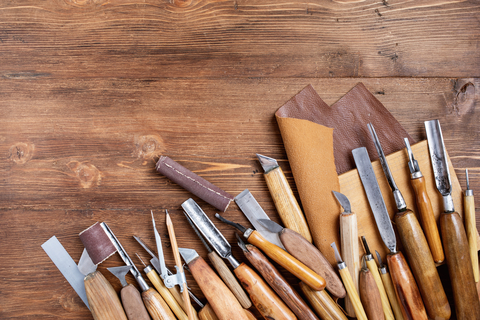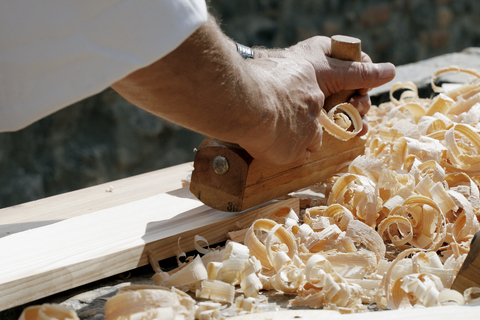Welcome to the world of Joinery
When it comes to woodworking, understanding the various types of joiners is crucial for creating sturdy and beautiful pieces. Whether you’re a seasoned woodworker or just starting, knowledge of the different kinds of wood joints will enhance your craftsmanship.Introduction to Wood Joints and Joiners
Wood joints are the foundation of woodworking, serving as the connection points where two or more pieces of wood meet. They play a vital role in the overall strength, aesthetics, and functionality of a project. The choice of joiners can significantly affect the durability and appearance of furniture, cabinetry, and other woodworking projects.
The Different Types of Joints Used in Woodworking
Woodworking features a wide variety of joints, each with its own application and strength. Understanding these joints is key to mastering woodworking. Here are some of the most popular types of joints:- Butt Joint: The most basic type of joint, where two pieces of wood are butted together. Though simple, the butt joint is not very strong on its own and often requires reinforcement with screws or dowels. It is commonly used in framing and construction when minimal strength is needed.
- Mitre Joint: Formed by cutting two pieces of wood at a 45-degree angle, the mitre joint is often used for picture frames and doors. While it provides a clean look, it may lack strength without additional support.
- Dado Joint: This joint involves cutting a groove into one board, allowing another board to fit snugly into it. Dado joints are commonly used in shelving and cabinetry for added strength and stability.
- Rabbet Joint: A rabbet joint is similar to a dado, but the groove is cut into the edge of a piece of wood. This joint is often used in cabinet construction and picture frames, providing a larger surface area for glue and a stronger bond.
- Mortise and Tenon Joint: Often considered the strongest joint in woodworking, the mortise and tenon joint consists of a tenon (a projection) on one piece fitting into a mortise (a hole) on another. This joint is particularly strong and is commonly used in furniture making.
- Dovetail Joint: Known for its interlocking design, the dovetail joint is often used in drawer construction. Its tooth-like structure makes it exceptionally strong and resistant to pulling forces.
- Pocket Hole Joint: It involves drilling an angled hole and fastening it with a screw. This is a popular method for quick assembly in cabinets and furniture, providing good strength and simplicity.
The Strongest Joint in Woodworking
As previously mentioned, the mortise and tenon joint is generally regarded as the strongest joint in woodworking due to its precise fit and the large surface area for glueing. It creates a strong, stable connection that can withstand significant forces, making it ideal for structural components of furniture.The Best Type of Joinery
The best type of joinery often depends on the specific project and desired outcome. For strength and durability, the mortise and tenon joint is unrivalled, especially for heavy-duty furniture. For decorative pieces, the dovetail joint offers both strength and aesthetics. Ultimately, the choice should reflect both the functional requirements and the joinery design intent of the piece.The Uses of Woodwork Joints
Woodwork joints have various applications, including:- Structural Support: Joints like mortise and tenon provide essential strength for load-bearing furniture.
- Aesthetics: Dovetail and mitre joints offer visually appealing connections in fine furniture.
- Assembly: Pocket hole joints facilitate quick assembly, making them popular in cabinetry projects.
Choosing the Right Woodworking Joint
Choosing the right joint depends on the project’s requirements:- For cabinets, consider using dado joints for shelves for maximum support.
- For drawer construction, opt for dovetail joints for strength and beauty.
- Use butt joints for simple projects where speed is crucial.

Other types of wood joints
In addition to the previously mentioned joints, there are several other types of wood joints used in woodworking:- Tongue and Groove Joint: Commonly found in flooring, this joint allows two edges to be joined together to create a flat surface. It is strong and suitable for re-entrant angles, panelling, and flooring.
- Half Lap Joint: In this joint, material is removed from both pieces, resulting in an overall thickness equal to the thickest piece. It is often used for creating a flush surface.
- Biscuit Joint: This joint involves cutting crescent-shaped holes in the ends of two pieces of wood, inserting glued wooden biscuits, and clamping the pieces together. It provides good strength and alignment.
- Finger Joint: Also known as a comb joint, this joint is made by cutting multiple interlocking profiles into two pieces of wood. The pieces are then glued together, creating a strong, decorative joint.

